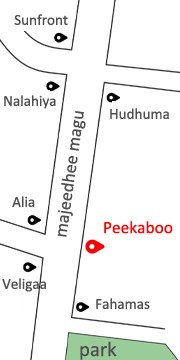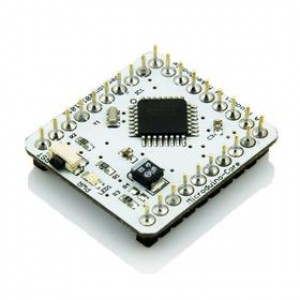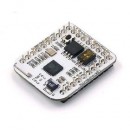Shopping Cart
0 item(s) - MVR 0.00-
Toys
- - 4M
- - Ambi
- - Aurora
- - Barbie
- - Beyblade
- - Buki
- - Cayro
- - Cobble Hill
- - Disney
- - DJI
- - Dreamland
- - Fisher-Price
- - Funskool
- - Galt
- - Hape
- - Hasbro
- - Hola
- - Hot Wheels
- - Huina
- - Intex
- - Kuongshun
- - Lego
- - Maisto
- - Make Believe Ideas
- - Make It Real
- - Makerzoid
- - Matchbox
- - Mattel
- - Mega Bloks
- - Melissa & Doug
- - Micro
- - Microduino
- - Mideer
- - My Little Pony
- - Nerf
- - Nikko
- - Paw Patrol
- - Play-Doh
- - Pokemon
- - Ravensburger
- - Spiderman
- - Syma
- - Transformers
- - Usborne
- - Waya Toys
- - WeeeMake
- - WL Toys
- - Xinbida
- - Xootz
- - Zecong
- - Zuru
- Fashion
- Shop by Age
-
Shop by Category
- - Art & Crafts
- - Beach & Water Play
- - Board Games
- - Books
- - Buildable Toys
- - Costumes & Wearables
- - Dolls & Figurines
- - Furniture & Room Decor
- - Gift Vouchers
- - Guns & Projectiles
- - Household Pretend Toys
- - Magnetic Toys
- - Non-RC Vehicles & Playsets
- - Out-door Play
- - Party Toys
- - Ride-on Toys
- - Science Kits & Robotics
- - Sensory Toys
- - Stationery
- - Musical Toys
- - Puzzles & Games
- - Soft Toys
- - Stickers & Activity Play
- Special Needs
- Shop by Radio Control
Microduino Core - ATMega328
Package Size: 5 x 1 x 7.2 inches
Age Group: 9yr+
Availability: In Stock
Excl. GST: MVR 115.74
Microduino-Core is an 8-bit microcontroller development board, with the core of Atmel ATmega328P and ATmega168PA series. It is a open-source, compatible-with-Arduino UNO controller module. Compared with Arduino UNO, Microduino-core has the following features:
- It uses the U-shape 27pin Microduino interface specification, and it has multiple interface compatible peripheral modules and sensors.
- Microduino breaks up the USB serial interface communication module and Atmega core module, and makes them into two Microduino development boards which can be divided and stacked.
- It uses micro USB to supply power, and removes the external power supply socket, making the whole size very small, 25.4mm long X 27.94mm wide(the size of a 1 yuan coin).
Lightweight design makes Microduino has a unique advantage in the project designs with the requirement of size and cost, and it can achieve the fast and flexible function extension for the design with other Microduino modules, according to the need of the players.
Microduino uses java and C language development environment, same as Arduino. The players can use Arduino IDE, together with software such as Flash and Processing, use Microduino and other electronic components, modules, and sensors to make many interesting and interactive works.
FAQ
|
Feature
- Small, cheap, stacked, and open.
- Open-source hardware circuit design, and programming development environment compatible with Arduino;
- Same as Arduino, Microduino can use ISP download line to program to「bootloader」 flexibly;
- Unified Microduino interface specification and abundant peripheral modules, can be quickly and conveniently and flexibly connected and extended with other modules and sensors conforming to the Microduino interface specification;
- 2.54-distance parent interface is convenient to integrate into the hole plate.
Specification
- 【Extension】Difference between Microduino-Core and Core+
- According to the different core and clock frequency, there are four different versions of the Microduino-Core:
-
Type Flash SRAM EEPROM Clock frequency - Atmega328P@16M,5V 32K 2K 1K 16M 5.0V ATmega328P@8M,3V3 32K 2K 1K 8M 3.3V ATmega168PA@16M, 5V 16K 1K 512 16M 5.0V ATmega168PA@8M, 3V3 16K 1K 512 8M 3.3V
- The size of Microduino: 25.4mm X 27.94mm .
-
Digital I/O There are 22 digital input/output ports totally:
- They are labeled on the module of D0, D1, D2~D13, and A0~A7, of which A6 and A7 can only input.
-
Analog I/O There are 8 analog input ports totally:
- They are labeled on the module of A0~A7;
- Each of them offers 10 resolution(namely 0~1024). By default, the analog voltage range for measurement is GND to VCC voltage values;
- Please refer to analogRead()' function for the details.
-
PWM supports, a total of 6:
- Respectively labeled on the module of D3,D5,D6,D9,D10,D11.
- Please refer to analogWrite() function for the details.
-
A serial port support, a total of 1:
- Labeled on the module of Serial[D0(RX), D1(TX)]
- If it connects with USBTTL module, it will take D0 and D1. If ports D0 and D1 are also be taken by other modules, it will communicate with USBTTL abnormal, and the program will not be able to download.
-
SPI support, a total of 1:
- Labeled on the module of D13(SCK), D12(MISO), D11(MOSI), D10(SS).
-
I2C support, a total of 1:
- Labeled on the module of SDA(A4), SCL(A5).
-
External interrupt support, a total of 2:
- Labeled on the module of D2(interrupt0), D3(interrupt1).
- Please refer to theattachInterrupt() function for the details.
- It supports the ISP download function.
- It supports the AREF end.
- Introduction of Pins:
| Pin | Original Pin Name | Map Pin Name | Digital Pin | Analog Pin | interrupt | PWM | Serial | SPI | I2C | Power |
| 1 | VCC | +5V | +5V | |||||||
| 2 | VCC | +3V3 | +3.3V | |||||||
| 3 | (AIN1)PD7 | D7 | D7 | |||||||
| 4 | (ICP)PB0 | D8 | D8 | |||||||
| 5 | (OC1A)PB1 | D9 | D9 | yes | ||||||
| 6 | (OC1B/SS)PB2 | D10 | D10 | yes | SS | |||||
| 7 | (OC2A/MOSI)PB3 | D11 | D11 | yes | MOSI | |||||
| 8 | (MISO)PB4 | D12 | D12 | MISO | ||||||
| 9 | (SCK)PB5 | D13 | D13 | SCK | ||||||
| 10 | AREF | AREF | ||||||||
| 11 | (ADC0)PC0 | A0 | D14 | A0 | ||||||
| 12 | (ADC1)PC1 | A1 | D15 | A1 | ||||||
| 13 | (ADC2)PC2 | A2 | D16 | A2 | ||||||
| 14 | (ADC3)PC3 | A3 | D17 | A3 | ||||||
| 15 | (ADC4/SDA)PC4 | SDA | D18 | A4 | SDA | |||||
| 16 | (ADC5/SCL)PC5 | SCL | D19 | A5 | SCL | |||||
| 17 | (ADC6) | A6 | D20(only input) | A6 | ||||||
| 18 | (ADC7) | A7 | D21(only input) | A7 | ||||||
| 19 | (RXD)PD0 | D0 | D0 | 0(RX) | ||||||
| 20 | (TXD)PD1 | D1 | D1 | 0(TX) | ||||||
| 21 | (INT0)PD2 | D2 | D2 | 0 | ||||||
| 22 | (OC2B/INT1)PD3 | D3 | D3 | 1 | yes | |||||
| 23 | (XCK/T0)PD4 | D4 | D4 | |||||||
| 24 | (OC0B/T1)PD5 | D5 | D5 | yes | ||||||
| 25 | (OC0A/AIN0)PD6 | D6 | D6 | yes | ||||||
| 26 | RESET | RST | ||||||||
| 27 | GND | GND | GND |




| Product Info | |
| Age Group | 9yr+ |

























